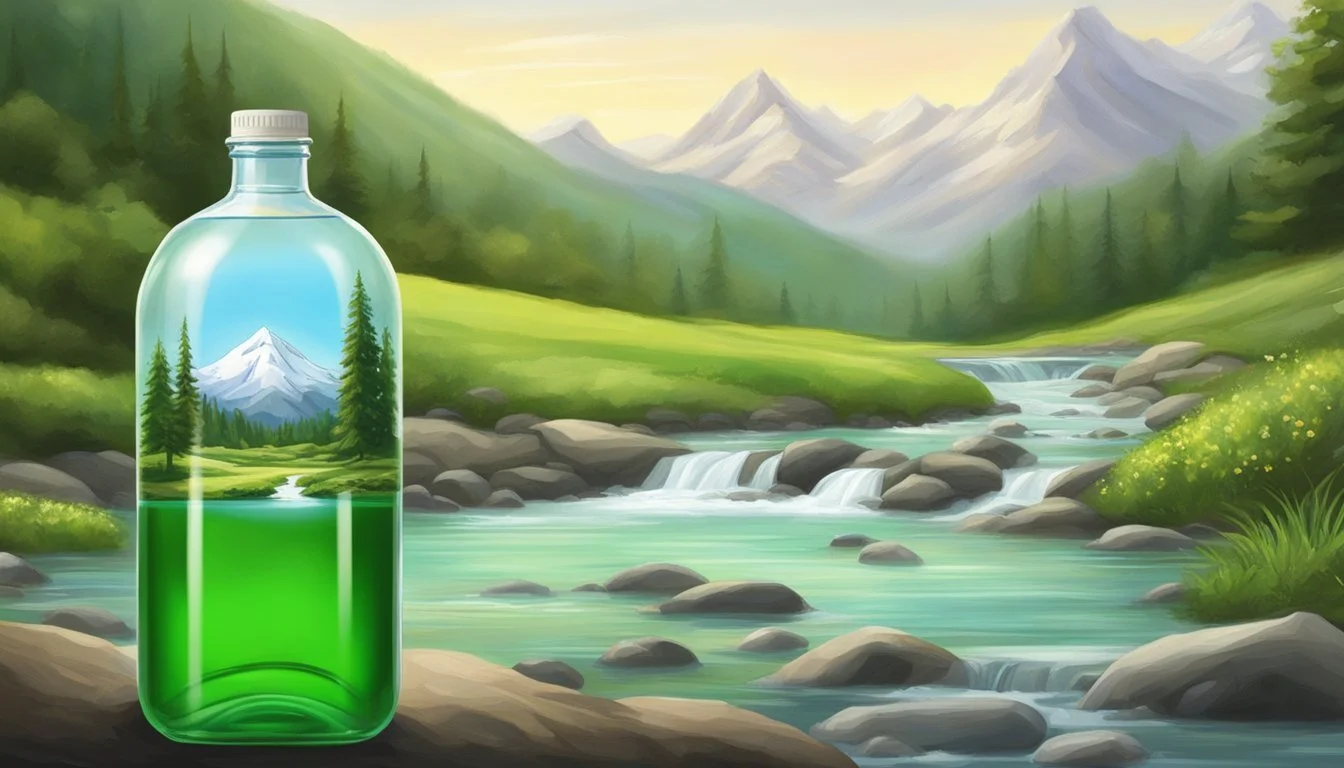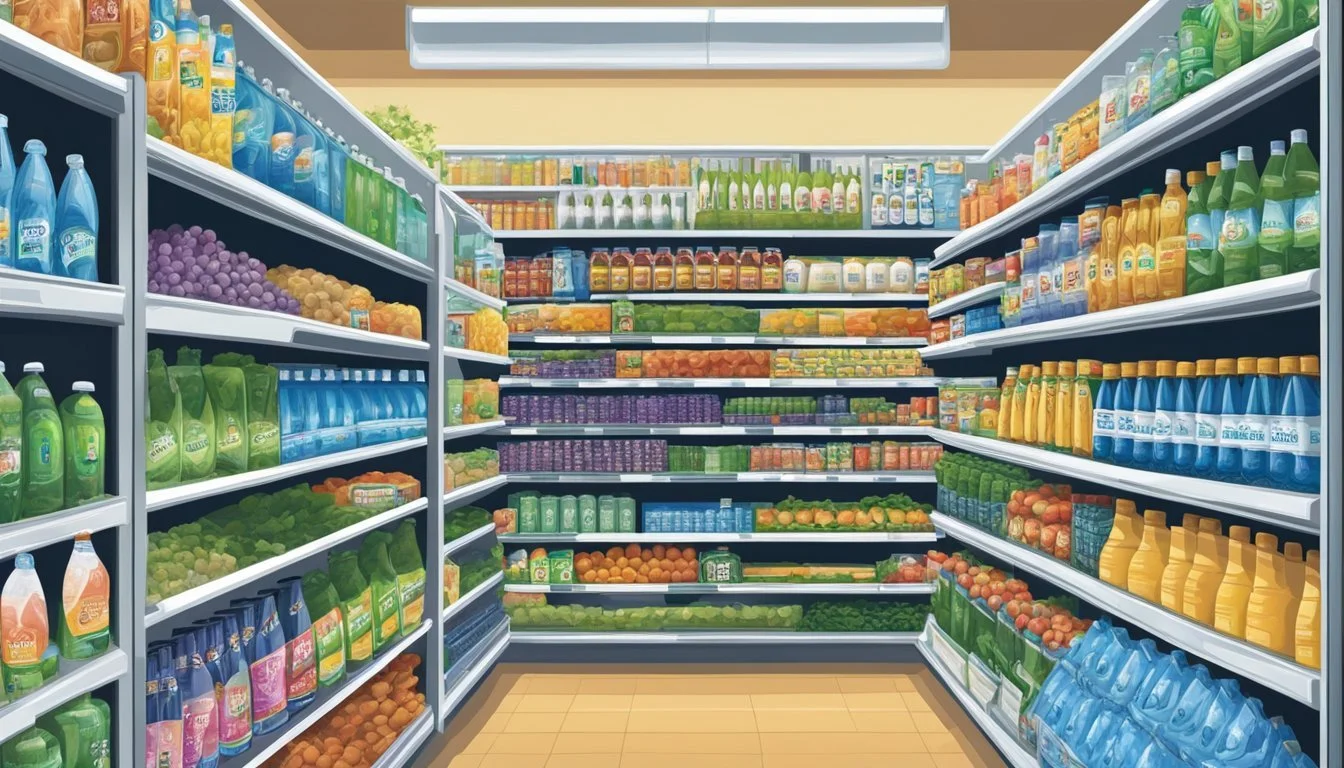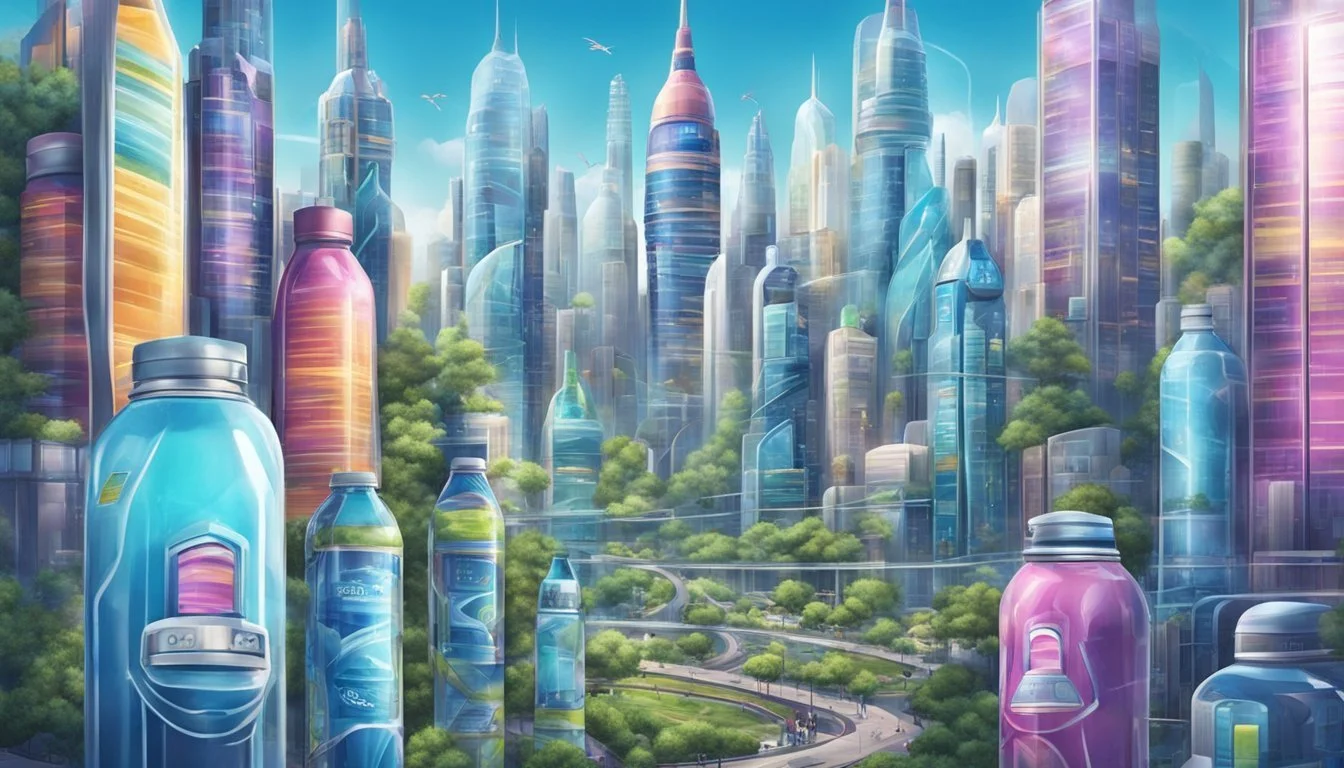Pure Life vs. Ramona
Which Bottled Water Offers Superior Quality?
When it comes to choosing between bottled water brands, Pure Life and Ramona often come up in discussions. Pure Life, a product of Nestlé, has been criticized for its sodium content, artificial sweeteners, and preservatives. Despite being a giant in the bottled water market, it is considered by some to be just average in quality.
On the other hand, Ramona offers a different approach with its emphasis on natural spring water and environmentally friendly practices. Consumers often praise its clean taste and consistent quality. This sets it apart from many competitors, making it a strong contender in the bottled water market.
For those seeking a healthier, more natural option, Ramona might be the better choice. By comparing the key aspects of both brands, this post aims to provide a clear and informed decision for the reader. Dive into the details to find out which bottled water truly stands out.
Understanding Bottled Water
Bottled water varies in type, safety regulations, and environmental impact. Key details about these aspects are crucial for making informed choices.
Defining Bottled Water Types
Spring Water comes from underground formations naturally flowing to the earth's surface. It's collected at the spring or through a borehole tapping the source.
Purified Water undergoes rigorous purification processes like distillation, deionization, or reverse osmosis. These methods remove impurities and any possible contaminants.
Mineral Water contains minerals occurring naturally at a constant level, typically sourced from a spring or well. It cannot be altered by adding or removing minerals.
Safety and Regulations
In the U.S., the EPA regulates tap water while the FDA oversees bottled water. Safety standards are set to ensure bottled water is safe for consumption.
Bottled water must meet stringent testing protocols for contaminants and microorganisms. Manufacturers are required to conduct regular testing and maintain records to ensure compliance.
Labeling requirements mandate clear information on the water's source and treatment, helping consumers make informed choices about their purchases.
Environmental Considerations
The environmental footprint of bottled water is a significant issue. Despite recycling efforts, plastic waste from bottles contributes to pollution.
Glass bottles are more environmentally friendly due to their recyclability and lower environmental impact. Some companies are using recycled materials to produce bottles, seeking further sustainability.
Transportation of bottled water also adds to carbon emissions. Choosing locally sourced brands can help reduce this impact.
Conservation efforts such as reduced water extraction from natural sources and better waste management practices are essential for more sustainable bottled water production.
Assessing Water Sources
When comparing Pure Life and Ramona bottled water, it's important to evaluate the origins and treatment methods of their water sources. This section breaks down the natural sources and aquifers, as well as the treatment and filtration methods used by each brand.
Natural Sources and Aquifers
Pure Life sources its water from both natural springs and well-protected underground aquifers across various regions. Some of these sources are nestled within protected lands, ensuring minimal contamination. The water from these sources is often naturally filtered through layers of rock and soil, adding essential minerals.
Ramona, on the other hand, typically sources its water from multiple freshwater sources, including rivers and aquifers. This brand emphasizes affordability while still aiming to maintain quality. Some Ramona water may originate from volcanic rock formations, contributing unique mineral compositions to the water profile.
Treatment and Filtration Methods
Pure Life employs a multi-step filtration process to ensure purity and safety. This includes reverse osmosis, carbon filtration, and ozonation. Reverse osmosis helps remove contaminants, while carbon filtration gets rid of chlorine and other chemicals. Ozonation is used for disinfection, making the water safe for consumption.
Ramona utilizes a simpler yet effective filtration method that often includes microfiltration and UV light treatment. Microfiltration helps remove larger particles, and UV light treatment ensures microbial contaminants are killed. By using these methods, Ramona balances affordability and quality, ensuring the water remains safe without excessive processing.
Comparative Analysis: Pure Life vs. Ramona
When comparing Pure Life and Ramona bottled water, important factors include mineral content, taste profile, and bottle packaging and branding. Each aspect contributes significantly to the overall value and consumer preference.
Mineral Content Comparison
Pure Life, produced by Nestlé, typically undergoes a rigorous filtration process. This often results in lower mineral content compared to natural spring waters. The brand emphasizes purification, removing impurities but sometimes diminishing mineral presence.
In contrast, Ramona bottled water is sourced from natural springs, maintaining a higher mineral content. This water retains essential minerals like calcium and magnesium, making it favored by those seeking natural hydration benefits.
Brand Mineral Source Key Minerals Pure Life Filtered water Low mineral content Ramona Natural springs Higher mineral content
Taste Profile Assessment
Taste is a subjective but crucial differentiator between Pure Life and Ramona. Pure Life often faces criticism for its "flat" or "bland" taste. The extensive filtration process can strip the water of its natural flavors, leading some consumers to describe it as less refreshing.
Ramona, with its higher mineral content, tends to have a richer taste profile. The natural mineral notes provide a more refreshing and satisfying experience. Consumers who prefer a more robust and natural water taste are likely to lean towards Ramona.
Bottle Packaging and Branding
Bottle packaging and branding also set Pure Life and Ramona apart. Pure Life bottles are designed with practicality in mind, featuring a lightweight and functional design. The branding focuses on purity and health, with a straightforward, no-nonsense presentation.
Ramona, on the other hand, emphasizes premium quality and environmental consciousness. Their bottles often boast eco-friendly materials and elegant designs. The brand messaging highlights natural sourcing and superior quality, appealing to environmentally-aware consumers.
Brand Bottle Design Branding Focus Pure Life Lightweight, practical Purity, health Ramona Eco-friendly, elegant Natural quality, eco-conscious
By carefully considering these aspects, consumers can make an informed decision about which brand better suits their hydration needs.
Health and Hydration
When comparing Pure Life and Ramona bottled waters, the focus should be on how well they support hydration and their electrolyte and mineral content. These factors are crucial in maintaining balance and overall well-being.
Hydration Efficiency
Hydration efficiency relates to how effectively a water source helps replenish body fluids. Pure Life, sourced from various locations, is a purified water brand that aims to provide consistent hydration without added minerals. It's a good option for those seeking a straightforward, clean hydration source.
Ramona, on the other hand, often promotes its natural mineral content and spring sources. This can sometimes enhance hydration due to the presence of naturally occurring electrolytes, which help the body absorb water more effectively. These properties can be particularly beneficial for athletes or individuals needing efficient rehydration.
Electrolytes and Mineral Benefits
Electrolytes like sodium, potassium, and magnesium aid in maintaining proper bodily functions. Pure Life, typically lacking added minerals, mainly relies on its purification process to deliver crisp and clean water, but it doesn't provide the additional benefits of electrolytes.
Ramona water often contains natural minerals, contributing to its electrolyte profile. These minerals can support muscle function, nerve signaling, and overall hydration balance.
The pH levels of the water can also affect its health benefits. While Pure Life generally maintains a neutral pH, Ramona’s pH can vary depending on the source, impacting taste and perceived hydration benefits.
Both waters serve their purposes, but Ramona may offer additional health benefits due to its natural electrolyte content.
Market Analysis and Availability
Pure Life and Ramona are two prominent brands in the bottled water industry, each with its distinct market positioning and pricing strategies. This section examines the market dominance of these brands and their affordability to consumers.
Brand Dominance
Pure Life, a product of Nestlé, enjoys widespread recognition. Its strong market presence in the United States is evident through extensive distribution in major grocery stores and convenience outlets. Nestlé’s established consumer trust consistently keeps Pure Life among the top choices for bottled water.
Ramona, despite being a newer entrant, has carved a niche for itself by focusing on affordability without compromising quality. Established in 2005, Ramona sources water from multiple freshwater locations and is frequently found in upscale grocery stores and health-focused retailers.
Pricing and Affordability
Pure Life is priced within a moderate range, making it accessible yet premium. In the bottled water market, Pure Life often offers competitive pricing, with multipack bottles frequently available at significant discounts in grocery stores and superstores like Walmart.
Ramona, on the other hand, is marketed as a more budget-friendly option without sacrificing quality. Consumers appreciate the affordability of Ramona products, which are positioned to cater to a broader demographic. This pricing strategy makes it a popular choice in both urban and rural retail markets.
The balance of competitive pricing and quality positioning ensures that both brands meet diverse consumer needs, making them staples in the bottled water industry.
Consumer Preferences and Trends
Consumer preferences for bottled water have evolved, with many factors influencing their choices. The appeal of branding, taste, and perceived purity plays a key role.
Bottled Water in Popular Culture
Bottled water brands like Pure Life, Dasani, and Aquafina dominate store shelves. Voss and Smartwater cater to a more premium segment, often associated with luxury and wellness. Consumers are drawn to these brands not just for hydration but also because they signify a certain lifestyle.
Celebrities often endorse premium bottled waters, and social media further propels their popularity. The visual appeal and marketing efforts reinforce the perception of quality and desirability.
Water Sommelier Insights
Water sommeliers provide expert opinions on bottled water quality, factoring in taste, mouthfeel, and source purity. They often rate waters like Voss and Smartwater highly due to their clean, crisp profiles.
They note that consumers may prefer Pure Life for its accessibility and consistent taste, despite it not being their top-rated. Ranking lists, such as "worst to best", help consumers navigate these choices, emphasizing factors like mineral content and processing methods to profile the best water experiences.
Quality and Purity Standards
Ensuring bottled water quality and purity standards involves thorough testing for contaminants and maintaining bottling process integrity. Specific factors like heavy metals, PFAS chemicals, and BPA are carefully monitored.
Testing for Contaminants
Purified water undergoes rigorous testing to meet stringent safety standards. Brands like Nestlé Pure Life and Ramona adhere to federal regulations, testing for heavy metals such as lead and arsenic. These tests are crucial to ensure clean drinking water.
PFAS chemicals and other contaminants are also checked. Nestlé Pure Life uses advanced filtration techniques to remove impurities, emphasizing their commitment to purity. Ramona similarly focuses on comprehensive contaminant testing, aiming to provide safe and clean water for consumers.
Bottling Process Integrity
The bottling process for both Nestlé Pure Life and Ramona maintains high standards. Ensuring BPA-free packaging is a priority, protecting water from chemical leaching. State-of-the-art facilities are used to manage the bottling process with precision.
Both companies prioritize hygiene and cleanliness, minimizing potential contamination during packaging. Advanced filtration systems and regularly sanitized equipment contribute to the integrity of the bottling process.
These measures reassure consumers of the reliability and safety of their chosen bottled water.
Environmental and Sustainability Concerns
Pure Life and Ramona have notable differences in their approaches to environmental impact and sustainability. Pure Life focuses on purified water through advanced filtration, while Ramona is often lauded for its minimally processed spring water.
Bottle Materials and Recycling
Pure Life primarily utilizes plastic PET bottles, which are widely recyclable. Despite this, plastic bottles contribute significantly to environmental waste if not properly recycled. Ramona, meanwhile, is often available in glass bottles, which are not only recyclable but also reusable.
Glass bottles tend to have a lower environmental impact due to their reusability and non-toxicity. Though heavier, which can increase carbon footprints during transportation, they remain a favored choice for environmentally conscious consumers. Additionally, companies, including Ramona, are also exploring options like boxed water to further reduce their environmental footprint.
Blutriton has emerged as a more sustainable choice for water bottle materials, being lighter than glass and more durable than plastic. Some companies are evaluating its potential to replace traditional materials, though it’s still in its early stages of adoption.
Sourcing and Sustainability Practices
Pure Life sources its water from various locations and utilizes a multi-step purification process to ensure consistent quality. This process, while effective, often involves significant energy consumption. On the other hand, Ramona sources its water from natural springs, which can have a lower energetic footprint compared to artificial purification.
Sustainable sourcing practices for Pure Life involve ensuring that water extraction does not negatively impact local ecosystems. This is crucial to maintain natural water tables and environmental balance. Ramona emphasizes sustainability by limiting its footprint through minimal processing and lower energy use.
Both brands have committed to improving their sustainability practices. For example, Nestlé, the producer of Pure Life, has started to shift towards renewable energy sources. Ramona, through its use of natural spring water and glass bottles, continues to promote an environmentally friendly image that appeals to eco-conscious consumers.
The Future of Bottled Water
The bottled water industry is evolving with advancements in technology and a focus on sustainability. Innovations in bottling methods are reshaping the production and consumption of bottled water brands such as Pure Life and Ramona.
Innovations in Bottling Technology
Technological improvements are making the bottling process more efficient and environmentally friendly. Recycled PET plastics are increasingly used, reducing reliance on virgin materials. Nestlé Pure Life and Fiji Water, for instance, have adopted lightweight bottles that reduce transportation energy.
Smart packaging is another innovation. Icelandic Glacial and Aquafina are experimenting with caps embedded with sensors to ensure water purity until consumption.
Natural mineral enhancements are gaining popularity, with brands adding minerals during processing to replicate the taste of natural spring waters. This trend aims to balance taste and health benefits, a key feature in brands like Ramona.
More About Pure Life
Cascade Mountain vs Pure Life: Which Bottled Water is Better?
Hawaii Volcanic vs Pure Life: Which Bottled Water is Better?
Hawaiian Springs vs Pure Life: Which Bottled Water is Better?
Icelandic Glacial vs Pure Life: Which Bottled Water is Better?
Nestle Pure Life vs Pure Life: Which Bottled Water is Better?
Pure Life vs Kirkland Signature: Which Bottled Water is Better?
Pure Life vs Whole Foods 365: Which Bottled Water is Better?
Richard's Rainwater vs Pure Life: Which Bottled Water is Better?
Solan de Cabras vs Pure Life: Which Bottled Water is Better?
Talking Rain AQA vs Pure Life: Which Bottled Water is Better?
Whole Foods Italian Still Mineral water vs Pure Life: Which Bottled Water is Better?











